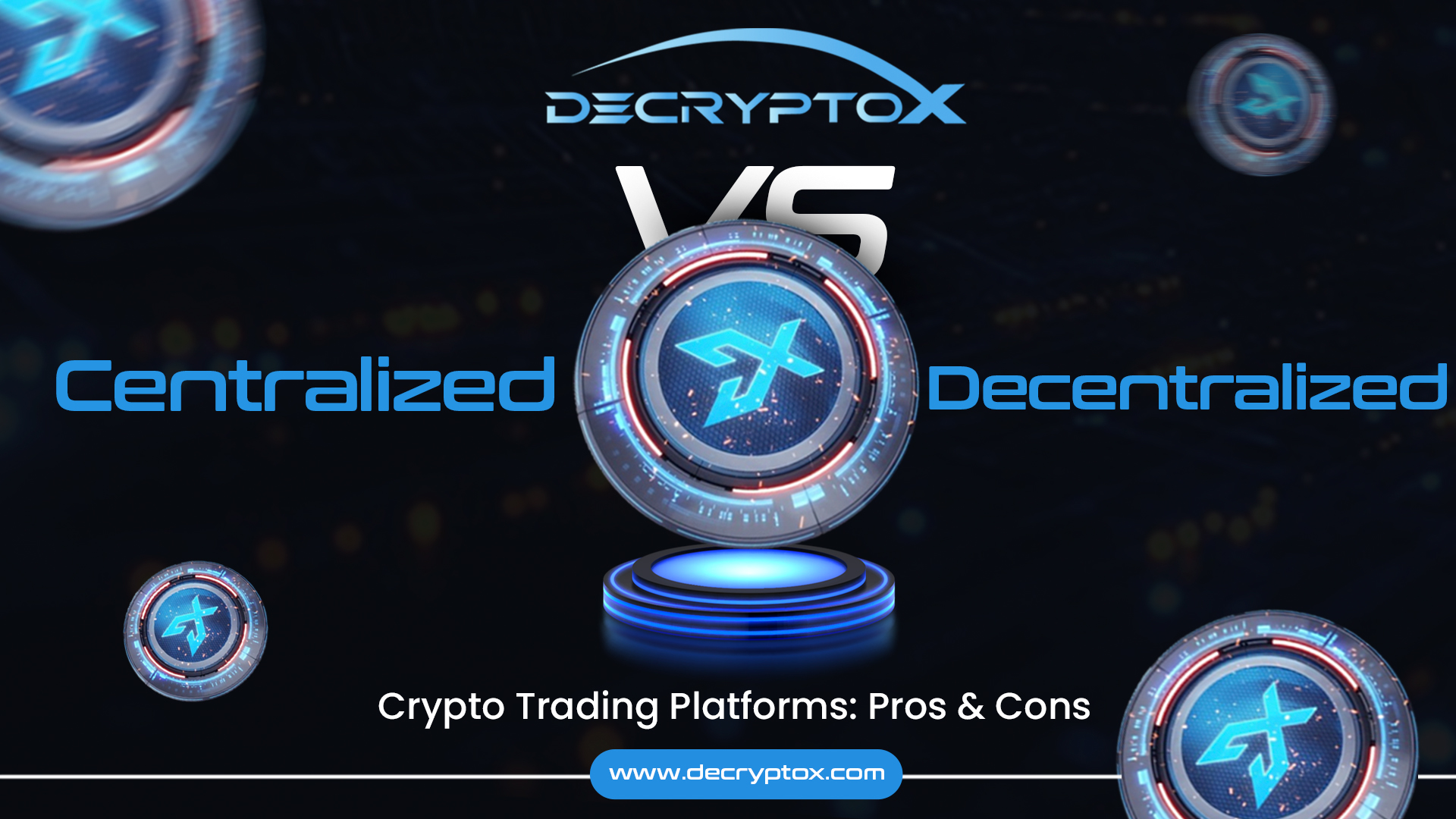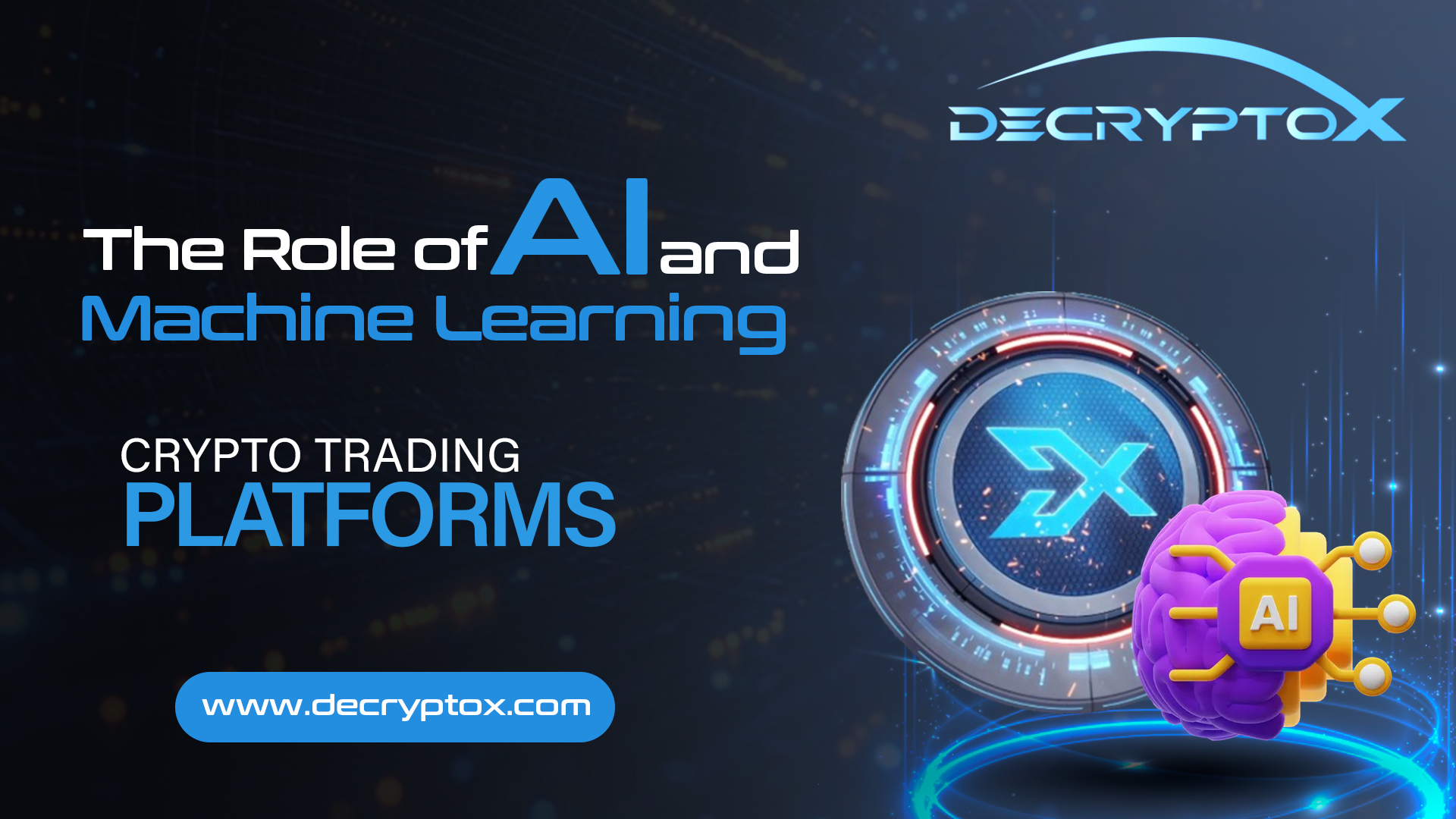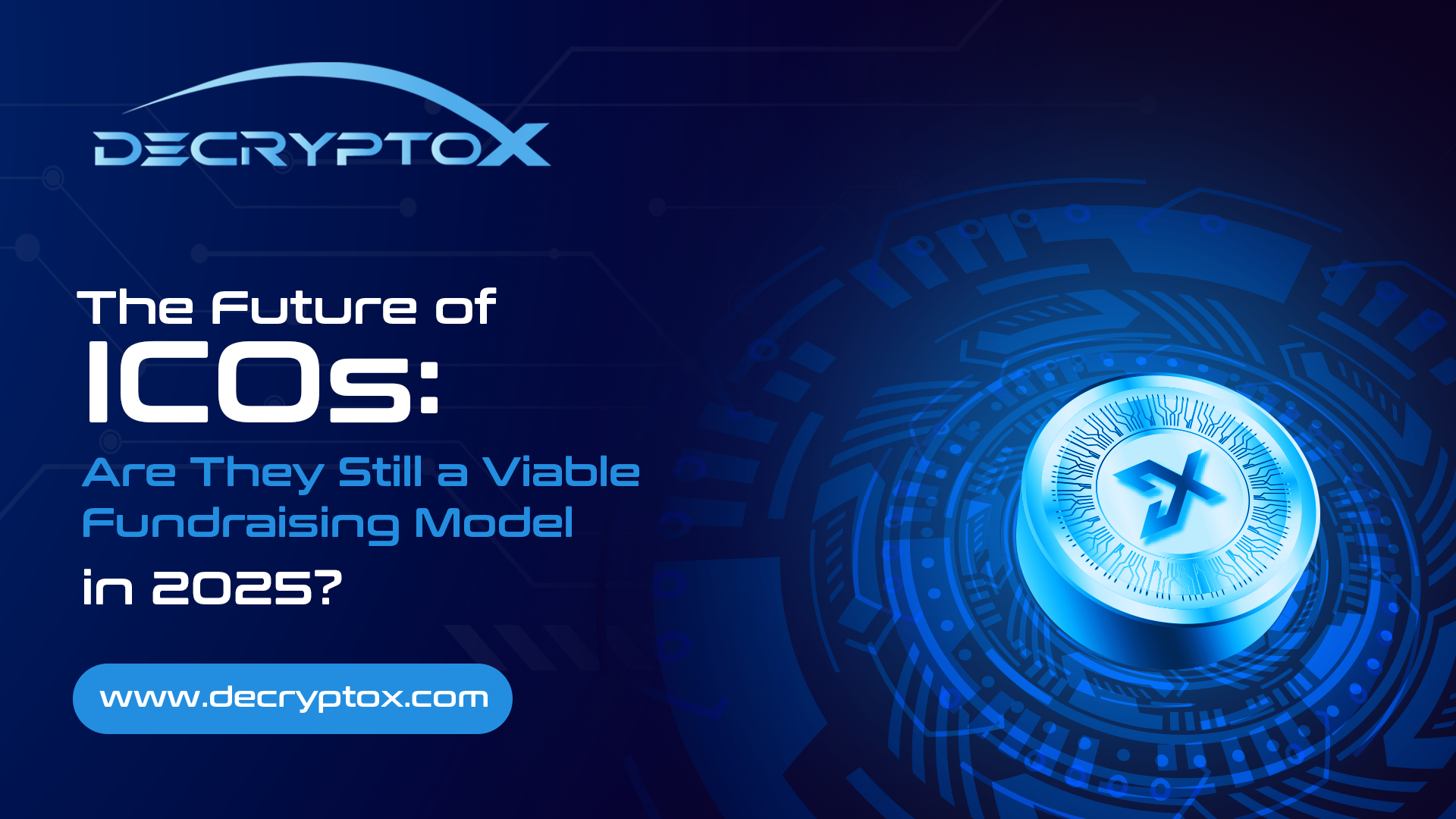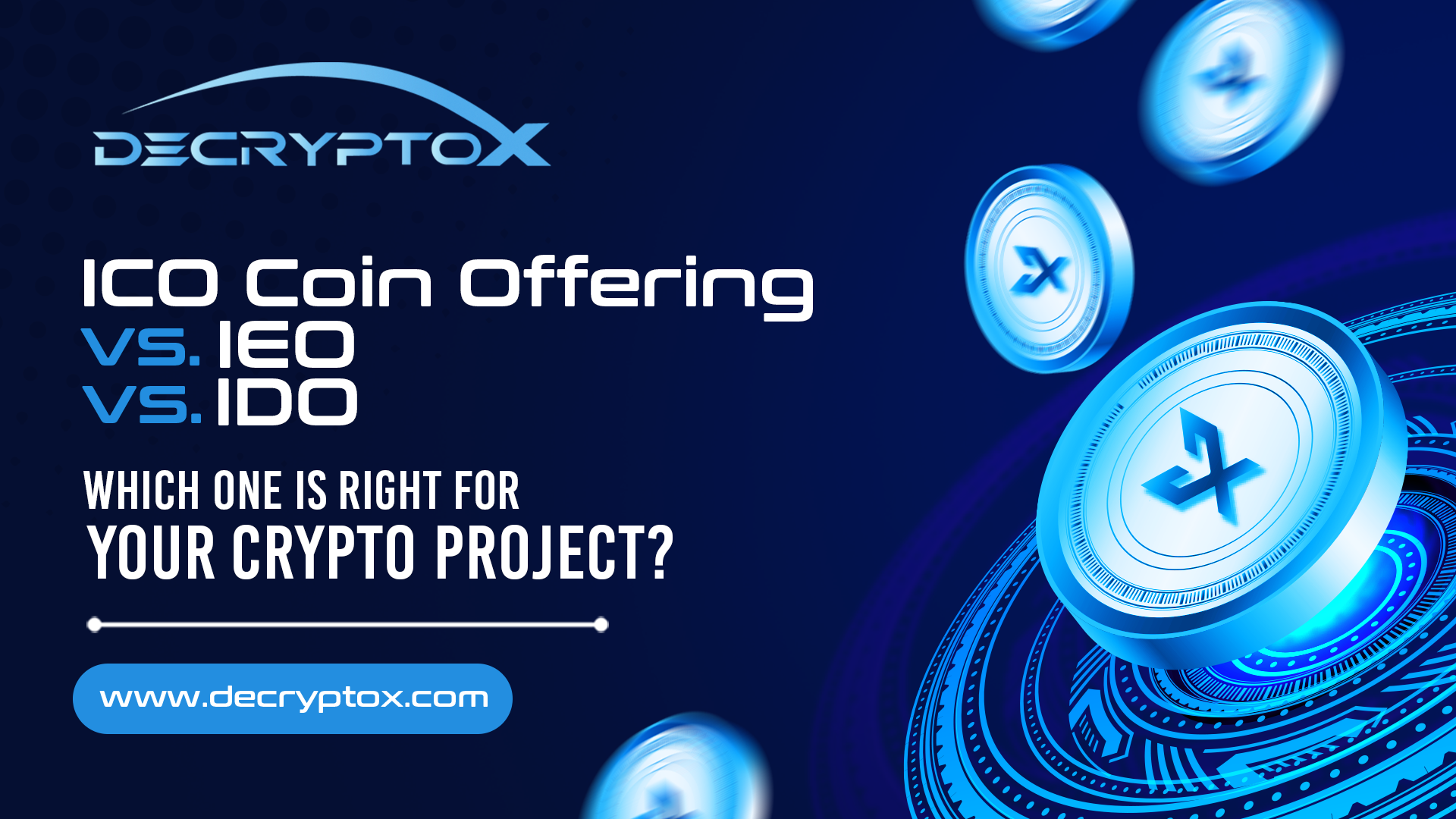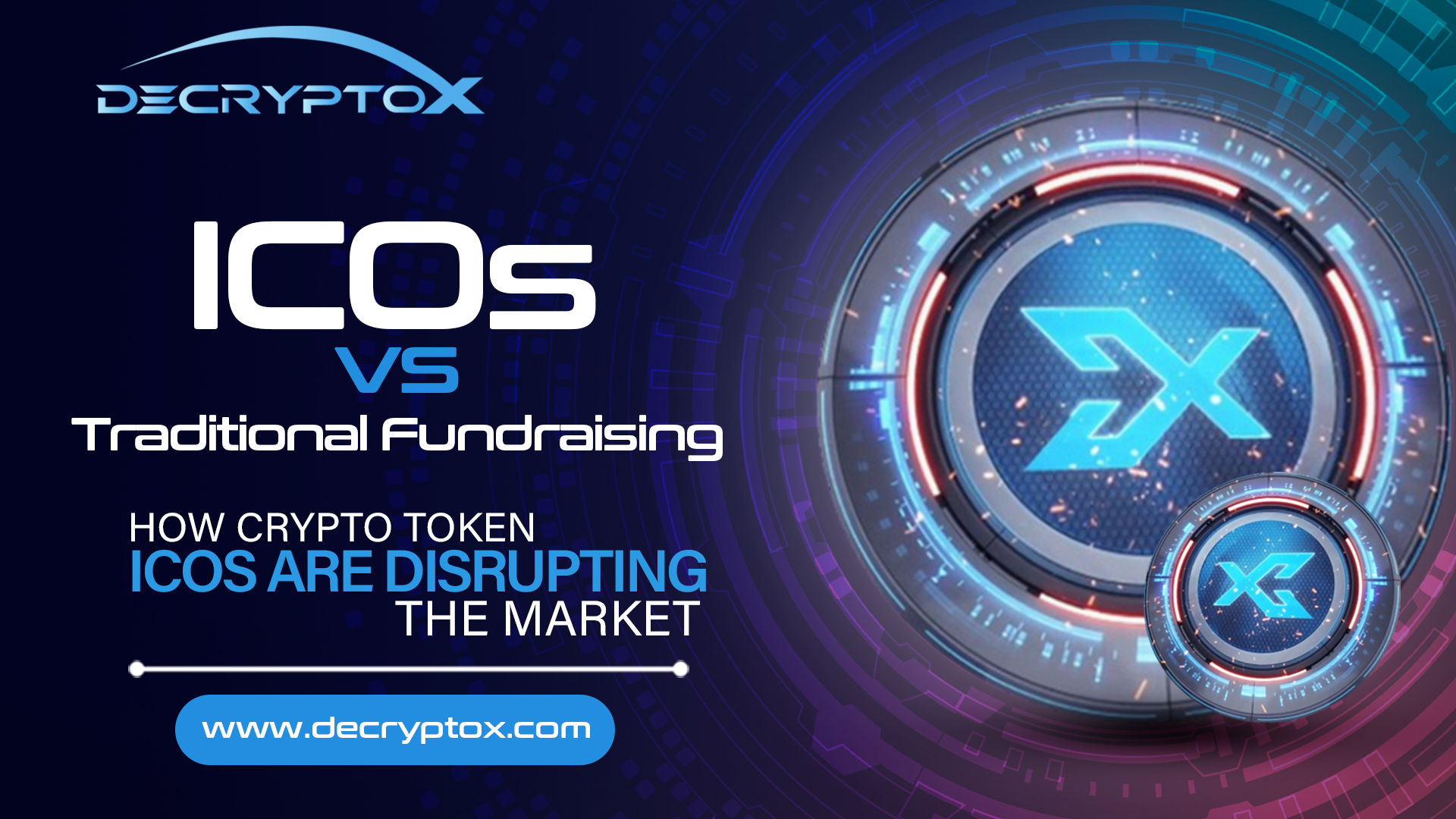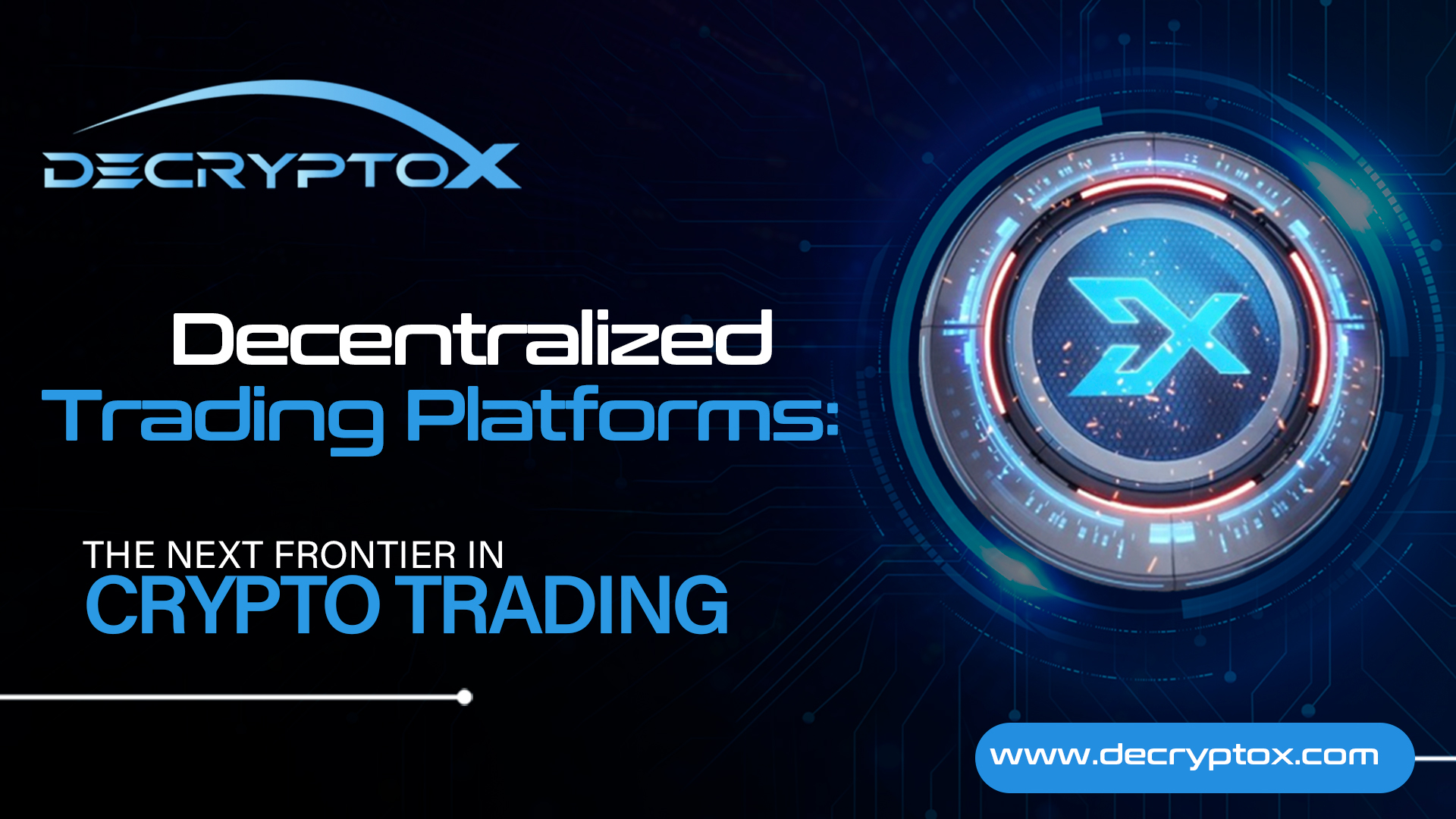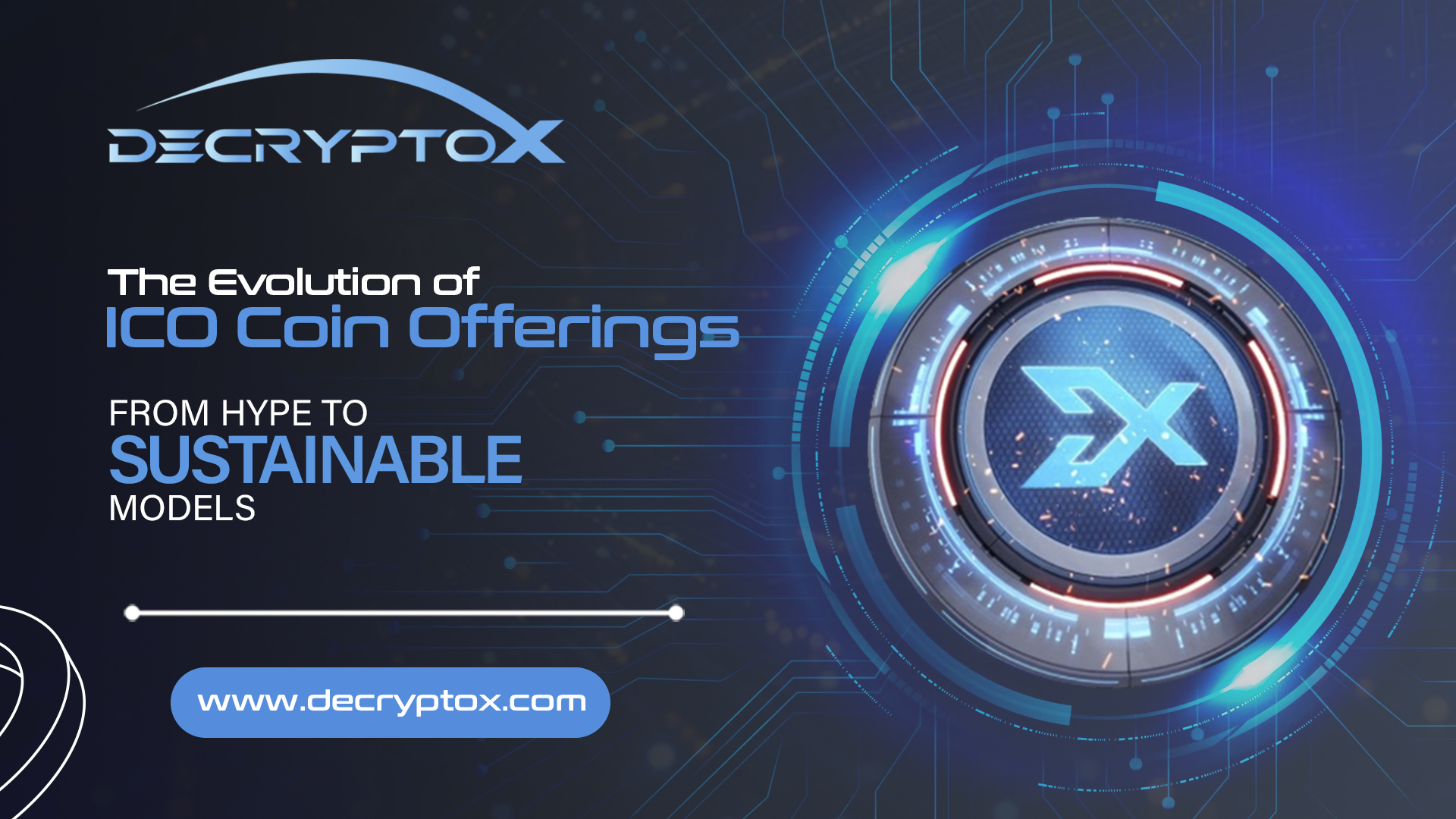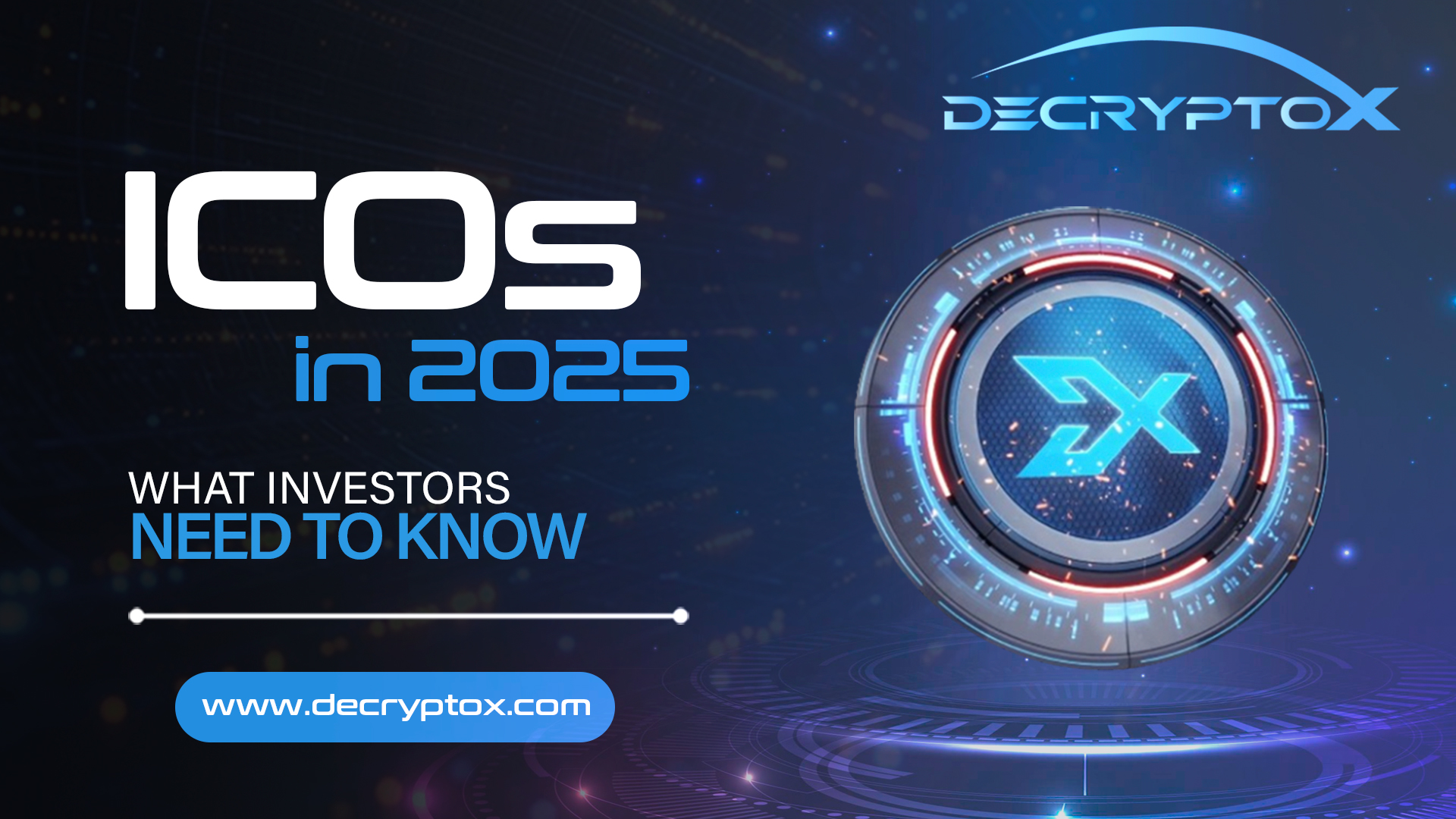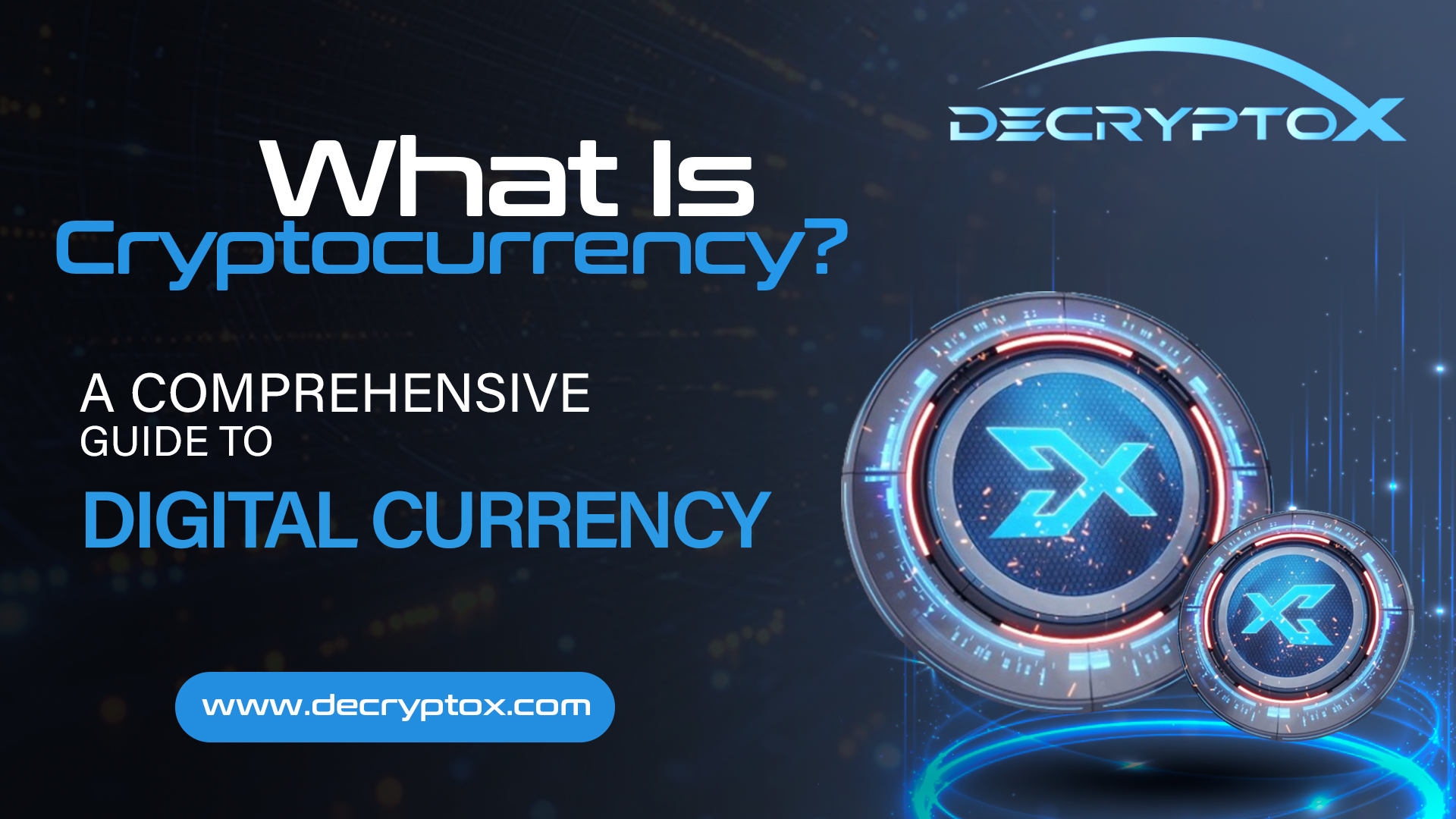How to Use Technical Analysis for Smarter Crypto Trading Decisions The art of crypto trading exceeds simple market entry at low prices to sell when values rise because this field demands strategic evaluation of market trends. A trader can achieve their best trading results through applying technical analysis (TA) methods effectively. The mastery of TA techniques enables both beginning and experienced traders to recognize market trends and determine entry points as well as exit points and predicted price changes. Technical analysis brings value to crypto traders through these methods that help you trade smarter in the market. The basics of Crypto Trading Analysis technique. The future direction of prices becomes apparent through technical analysis by evaluating historical market data through toolsets which include charts and indicators. The goal of fundamental analysis is to evaluate coin value fundamentals yet technical analysis uses only price data analysis with trading volumes and market movements. The primary components of technical analysis include relevant tools along with essential indicators. Successful implementation of technical analysis depends on a set of indicators and tools used by traders. The list contains the following essential indicators: 1. Candlestick Patterns Candlestick price charts present historical trading information through bars which reveal market emotional shifts. Common patterns include: The bullish engulfing pattern shows sign of upcoming price increase. The pattern of a bearish engulfing shows potential price reduction. – Doji (sign of market indecision) 2. Moving Averages (MA) Price trends emerge clearly after smoothing down price movements through moving average calculations. The two main types are: – Simple Moving Average (SMA) – Calculates the average price over a set period. The Exponential Moving Average provides higher weighting to fresh price information thus it responds promptly to market fluctuations. 3. Relative Strength Index (RSI) RSI provides an indicator of asset value position by utilizing a value range between zero and one hundred to detect overbought or oversold conditions. Typically: – Above 70 = Overbought (potential reversal downward) – Below 30 = Oversold (potential upward reversal) 4. Bollinger Bands Bollinger Bands contain an average and standard deviation bands which extending both upwards and downwards from the average. High market volatility occurs with enlarged bands while market stability appears when the bands become smaller. When price contact occurs at the upper band the market shows overbought signals whereas price contact at the lower band signals market oversold status. 5. Fibonacci Retracement Fast Retracement helps traders determine support and resistance levels through price analysis at 23.6%, 38.2%, 50% and 61.8% ratios. These levels give traders valuable reference points to predict market reversal positions. How to Apply Technical Analysis in Crypto Trading Market trend assessment requires analysts to utilize moving averages combined with trend lines to identify upward momentum or downward pressure and sideways movement. You must detect support and resistance areas because these price points serve as both the points where trading assets bounce off (support) and the boundaries through which trading assets find resistance. A combination of RSI together with MACD and Bollinger Bands helps traders verify market trends and avoid incorrect analysis. Risk management stands as essential in volatile crypto markets which demands the use of Stop-Loss and Take-Profit level settings. Strategic stop-loss and take-profit orders should be placed with Technical Analysis to control losses and capture gains. Running a backtest with historical data should be your first step before you deploy the strategy to real-time markets. Final Thoughts Technological analysis gives traders a powerful framework to build better decisions for their cryptocurrency investments. People who learn key indicators together with trend recognition and risk management practices gain stronger confidence while navigating market conditions. Success in trading depends on technical analysis yet fundamental research and market trend monitoring should always supplement it because no strategy will guarantee wins. Have you decided to improve your trading capabilities? Begin analyzing trading charts alongside different indicator trials to find your optimal strategy. Happy trading!
Crypto Token ICO: How to Evaluate a New Token Before Investing
The Role of AI and Machine Learning in Crypto Trading Platforms Artificial Intelligence (AI) and Machine Learning (ML) implementations have revolutionized cryptocurrency trading over recent times by leading the development of upcoming trading methods. The new generation of sophisticated technologies makes traders better able to understand data and anticipate market movements while executing their trades. AI technologies demonstrate multiple methods which affect crypto trading platforms. This section looks into the essential elements of the discussion. How AI and Machine Learning Are Changing Crypto Trading 1. Market Analysis and Predictive Trading Real-Time Data : Through real-time data processing AI detects trends along with patterns existing across market data and beyond human detectability. 2. Price Prediction : Future market price fluctuations receive better prediction precision through machine learning models which analyze historical market behaviors. 3. Sentiment Analysis : Internet data through sentiment analysis allows AI systems to monitor market feelings using social media platforms and news reports thus helping traders forecast price movement. 4. Automated and Algorithmic Trading High Frequency Trading : The artificial intelligence system enables High-Frequency Trading bots to execute rapid trades which exploit brief price variations in extremely short amounts of time. 5. Reduce Emotional Trading : Differences Between AI Systems and Human Traders – Computers make decisions without emotional influences since they rely entirely on data-based logic. 6. Efficient Trade Execution : Automated trading bots execute trades with exact precision through delayed-free procedures thus they optimize earnings and reduce financial loss. 7. Risk Management and Fraud Detection Portfolio Optimization : The evaluation of portfolio risks by AI generates asset distribution methods which will help minimize financial losses. 8. Anomaly Detection : Machine learning models built for anomaly detection monitor trading platforms to stop suspicious transactions from damaging the system. 9. Violations Management : AI systems allow traders to handle crypto volatility through real-time adjustment of their trading strategies which respond to current market conditions. Challenges of Using AI in Crypto Trading AI system usage in crypto trading comes with several significant barriers despite its successful advantages. Data Accuracy issues : The accuracy of past data used in AI prediction systems could become a problem because market trends may not function as expected in the present or future. Overfitting Risks : Some machine learning models achieve excessive optimization of past market trends that creates limitations to adapt to fresh market situations Regulatory uncertainty : AI-powered trading platforms need to handle changes in regulations because they operate in diverse regions to maintain compliance. ICO viability stands as an open question for the future market conditions of 2025. AI system usage in crypto trading comes with several significant barriers despite its successful advantages. Data Accuracy issues : The accuracy of past data used in AI prediction systems could become a problem because market trends may not function as expected in the present or future. Overfitting Risks : Some machine learning models achieve excessive optimization of past market trends that creates limitations to adapt to fresh market situations Regulatory uncertainty : AI-powered trading platforms need to handle changes in regulations because they operate in diverse regions to maintain compliance. The Future of AI in Crypto Trading ASP and ML systems will enhance their importance for crypto trading during future technological developments. Future innovations may include: AI Powered Personalization Trading Assistance: Custom trading bots with artificial intelligence adapt to personal preferences of individual traders. Decentralized AI Trading Platforms: AI trading systems based on decentralized platforms combine security measures from decentralized networks alongside enhanced transparency. Improved Deep Learning Models: Sophisticated deep learning systems will deliver better market prediction accuracy than existing models. Conclusion Crypto trading platforms powered by AI and machine learning combinations now drive a market transformation by providing traders with advanced and time-saving methods to handle trading processes. The numerous advantages of AI-based trading exceed potential risks which make this technology required for new traders and experts to succeed in the markets. Acquiring AI-powered trading tools helps both new and experienced traders obtain more strategic investment decisions with higher accuracy. AI evolution will transform cryptocurrency trading methods into unanticipated directions as it progresses forward.
How to Spot a Legitimate ICO and Avoid Crypto Scams
The Future of ICOs: Are They Still a Viable Fundraising Model in 2025? Through ICOs the crypto fundraising sector underwent a transformation because blockchain projects secured global investor funds without intermediaries. Public opinion evaluates whether ICOs will maintain their position as a financing mechanism through 2025 given the current market trends and growing regulatory scrutiny. This paper evaluates ICO market dynamics while reporting upcoming trends combined with their probable development across a shifting cryptocurrency ecosystem. The Evolution of ICOs The trend of ICOs experienced its breakthrough moment in 2017 when Ethereum launched successfully to prove their fundraising capability. The market dealt with mounting scams and regulatory issues together with numerous failed projects that diminished investor belief in the industry. Initiative platforms like Initial Exchange Offerings (IEOs), Security Token Offerings (STOs) and Initial DEX Offerings (IDOs) introduced safer investment possibilities to the crypto industry after the initial crypto coin offerings faced difficulties. Current Trends Shaping ICOs in 2025 ICO operations have continued through the difficulties which the industry experienced. The concept has developed through several essential modifications during this time. 1. Regulatory Compliance and Transparency The worldwide implementation of rigorous laws exists to reduce fraudulent ICO activities. ICO projects that achieve success in 2025 will prioritize obeying securities regulations as well as implementing investor protection mechanisms together with detailed financial reporting transparency. Legitimate ICO models originated from regulatory requirements implementing security protocols across U.S., European and Asian jurisdictions. 2. Verify the Team and Advisors Potential investors display greater discretion by selecting efforts that demonstrate actual value instead of baseless sales buzz. The latest ICO models deliver blockchain applications for financial services and healthcare and supply chain operations to draw better interest and sustain long-term operations. 3. Hybrid Fundraising Models The market has moved past ICOs existing as the exclusive fundraising method. Various projects select hybrid fundraising strategies because they blend ICOs with IDOs or IEOs for combining decentralized with centralized funding advantages. A multi-level approach brings improved security along with better access opportunities to investors. 4. Community-Driven Investment DAOs play a major function in ICO fundraising operations through their decentralized autonomous organization structure. Through decentralized executive structures investors can participate in project development decisions which builds trust along with improved engagement. ICO viability stands as an open question for the future market conditions of 2025. Strategic values provided by ICOs persist even though they have become less popular than earlier times for blockchain startup fund raising activities. Success in the crypto world requires compliance with standards along with transparent practices that create immediate benefits for real users. Investors must undergo thorough examination of projects to understand their fundamentals as well as assess team capabilities and regulatory compliance so they can lower their risks. Conclusion Although ICOs will differ from their untamed state of 2017 they maintain their place as a significant method for crypto asset fundraising in 2025. The development of blockchain technology together with clearer regulations brings the possibility of ICOs forming an environment that builds investor trust along with innovative progress. Adaptability coupled with trust and sustainable growth-based commitment will determine their future success in this context. ICO platforms will preserve their role as valuable funding mechanisms for innovative blockchain projects by adopting market trends and implementing established industry standards.
ICO Coin Offering vs. IEO vs. IDO: Which One is Right for Your Crypto Project?
ICO Coin Offering vs. IEO vs. IDO: Which One is Right for Your Crypto Project? Cryptocurrency fundraising experienced significant development which created multiple funding possibilities for startups to obtain capital. Three leading blockchain fundraising methods consist of Initial Coin Offerings (ICOs) and Initial Exchange Offerings (IEOs) together with Initial DEX Offerings (IDOs). Every fundraising approach possesses different benefits together with its specific hurdles and protection degrees for investors. Understanding different funding methods which operate in cryptocurrency space becomes essential to select the suitable approach for your cryptocurrency venture. What is an ICO? Initial Coin Offerings (ICOs) function as the first blockchain-based mechanism for obtaining investment. The operation of an ICO leads projects to create their own tokens that investors purchase directly before the tokens become exchange-listed. Startups using ICOs maintain maximum flexibility since they can collect funds through direct customer transactions without requiring outside agents. The absence of regulatory measures in ICOs results in multiple money scams and project failures which make these events potentially unsafe for monetary investors. Pros of ICOs: Full control over the fundraising process Exchange-backed models have higher costs than ICOs do due to their direct funding approach. Potential for high returns for early investors Cons of ICOs: The absence of rules heightens the amount of financial exposure that investors face. Marketing and trust-building challenges The process without immediate exchange listing creates difficulties regarding liquidity. What is an IEO? Subscribing to a new token requires participation through an Initial Exchange Offering which lets cryptocurrency exchanges handle launch sales for project teams. A token purchase takes place on the exchange platform alongside an exchange-based assessment process which validates project legitimacy. An Initial Exchange Offering brings startups credibility along with massive user base opportunities because of which they are safer alternatives than ICOs. Pros of IEOs: The exchange review process builds higher investor confidence in these exchange-based offerings. Alice records success as takers can instantly trade newly listed tokens through her platform. -Exchange-backed marketing and exposure Cons of IEOs: The fee for exchange listings is high since exchanges demand significant fees from projects. Less control over the fundraising process Investors need to access the fundraising through the specific hosting exchange which acts as an accessibility barrier. What is an IDO? An Initial DEX Offering (IDO) happens on decentralized exchanges (DEX) thanks to their decentralized structure which omits central authority control. Token trading becomes available immediately through IDOs since they provide direct liquidity after launch. Projects who want decentralization and lower expenses often benefit from IDOs but investors must accept market price instability along with minimal regulatory protection. Pros of IDOs: New tokens issued through IDO services become immediately liquid on DEX exchange platforms after the launch. The expenses for IDO launches remain lower than IEOs IDOs provide decentralized operations which create equal opportunities through permissionless methods. Cons of IDOs: Market price tends to show high swings which produce dangerous level of volatility and unstable prices Less investor protection due to the absence of regulations Investments run the risk of becoming victims of frauds because inappropriate project vetting procedures enable fraudulent actors to enter the market. Which Fundraising Method is Right For You? organizations must determine which funding approach fits their resources best. Your project should evaluate ICOs IEOs or IDOs according to its particular needs and accepted risk levels. When you select an ICO you attain complete fundraising authority and believe in establishing strong relationships with financial stakeholders. IEO tokens provide an exchange-backed token sale with security and credibility at the cost of higher expenditures. An IDO is suitable for those who want decentralization alongside immediate market accessibility with cost-effective terms but must accept fluctuations and reduced regulatory governance. Conclusion The cryptocurrency sector contains multiple fund-raising channels that startups can use to obtain financing. ICOs allow flexibility for investors yet they present substantial risks to them. Security enhancements in IEOs increase project costs while IDOs maintain low expenses but provide no security measures for investors. You must evaluate your project targets and regulatory rules together with investor preferences when selecting appropriate fundraising approaches.By making an informed decision, your crypto venture can successfully navigate the dynamic blockchain ecosystem and secure the funding it needs for long-term success.
ICOs vs. Traditional Fundraising: How Crypto Token ICOs Are Disrupting the Market
ICOs vs. Traditional Fundraising: How Crypto Token ICOs Are Disrupting the Market The traditional pathway to funding business expansion centers around Initial Public Offerings (IPOs) and venture capital (VC) investments and has always served as a fundamental foundation for achieving business growth. Startups and projects now find funding alternative through Initial Coin Offerings (ICOs) which use blockchain technology to modernize the capital acquisition process. Traditional fundraising methods appear to perform differently from ICOs when comparing their operation. This piece breaks down the fundamental contrasts between ICOs whereas discussing the market-shaking impact of this new alternative. Understanding ICOs and Traditional Fundraising What is an ICO? The Initial Coin Offering (ICO) fundraising strategy enables companies to create blockchain-based digital tokens for acquisition by investors who use both cryptocurrency and fiat money. The digital tokens issued in an ICO can hold different utilities regarding platform entry and voting rights together with the potential to generate profits. The blockchain sector along with other startups benefit from ICOs since these funding methods provide them money without requiring bank-based intermediaries or venture capitalist involvement. Traditional Fundraising Methods Traditional fundraising typically involves: Venture capital (VC) : Startups who approach institutional investors with their ideas receive funding which requires the investors to receive equity in exchange. Initial Public Offering (IPO) : Companies achieve initial public offerings on stock exchanges through the process of IPO which makes their shares available for investor purchase. Crowdfunding : Businesses obtain financial contributions from numerous small donor groups through internet-based crowdfunding platforms. Bank loans & Angel Investors : Startups receive funding from banks and angel investors that normally involves loans but comes with both repayment requirements and reduced ownership shares. ICO fundraising systems distinguish from conventional methods through distinct characteristic points. 1. Accessibility & Inclusivity ICO operations welcome international investors because they can get involved through their internet connection. Traditional fundraising necessitates both accreditation of investors and regulatory compliance to proceed. 2. Regulatory Landscape Traditional fundraising methods operate under strict regulations which secure investor funds. ICO investments exist in unregulated areas since their emergence as new financial instruments which increases the possibility of financial scams against investors. 3. Speed & Efficiency Electronic smart contracts and decentralization enable ICOs to gather millions of dollars fast during days or hours. Investors in IPOs and VC funding need to undergo extended legal approval and regulatory review procedures that commonly extend to several months or even years. 4. Ownership & Control Token holders in ICO projects maintain no equity stake in the company which allows founders to exercise full authority over business control. When companies participate in VC funding and IPOs they must relinquish a notable share of ownership which robs them of their management authority. 5. Liquidity & Investment Exit ICO tokens establish instant liquidity through their trading functionality on cryptocurrency exchanges. The liquidation of traditional assets depends on stock market listings or acquisition deals before obtaining cash. How ICOs Are Disrupting the Market Lower Barriers to Entry Startups worldwide can now break into fundraising activities through ICOs because these ventures provide funding without requiring VC corporation linkages. Innovation in Fundraising Models ICO utility tokens act differently from standard equity approaches by implementing blockchain assets that establish platform environments where users feel motivated to participate actively while enjoying decentralized administrative systems. Tokenization of Assets ICEs establish new possibilities concerning tokenized assets by permitting blockchain-based trading of properties including real estate and intellectual property. Increased Transparency & Trust Authentication of all token distributions through blockchain systems results in an unalterable transaction history that fights fraud and builds trust among investors. The Future of ICOs & Traditional Fundraising Although ICOs faced both regulatory pressure and fraudulent activities they remain in development. Governments across the globe establish standards for token offerings which resulted in the creation of Security Token Offerings (STOs) and Initial Exchange Offerings (IEOs) as new secure and regulated financing choices. Fundraising methods that have existed traditionally will maintain their vital function mainly for businesses trying to secure trustful investors who value market stability. Blockchain adoption expansion could replace traditional fundraising approaches by making decentralized fundraising models dominant in the future. Conclusion The fundraising world received a significant transformation through ICOs which provide startups and investors with faster opportunities coupled with enhanced accessibility. The free-from-regulation structure of these ventures presents critical security concerns which investors need to analyze properly. Traditional fundraising delivers law compliance with security as its main benefit at the expense of reduced efficiency and diminished autonomy. Investors and entrepreneurs need to understand both fundraising methods since their distinct features create vital information for sensible investment choices. ICOs show potential as replacements or additions to traditional fundraising methods but blockchain is already established as a permanent frontier in this space.
Security in Crypto Trading Platforms: Protecting Your Investments in a Digital World
Security in Crypto Trading Platforms: Protecting Your Investments in a Digital World People put more trust in crypto trading platforms because cryptocurrency becomes more widely used. The prevalence of advanced cyber threats makes investors responsible for defending their digital investments. This blog explains what security steps need to be taken by crypto traders to protect their digital assets. Understanding Crypto Security Risks The decentralized nature of Crypto allows users to take charge of their actions but makes them vulnerable to specific security threats. Some common threats include: Someone tries to take sensitive information from victims through websites and emails that fake the appearance of genuine services. Network thieves target exchanges to empty the wallets of their users. Malware programs and keylogger setups steal private keys and passwords to hack into wallets. Scammers promote investing on new projects before taking all deposited money with them. Key Security Measures For Crypto Investors Traders and investors need to take several security steps to reduce their exposure to these perils. 1. Use Secure and Reputable Exchanges A secure platform should be your first selection when choosing an online wallet. Look for exchanges that offer: – Two-factor authentication (2FA) – Cold storage for funds – Insurance against cyberattacks – Transparent regulatory compliance 2. Enable Two-Factor Authentication (2FA) Your account security gets significant improvement when you switch on 2FA for your wallet and exchange platforms. 3. Secure wallet for maximum protection To reinforce security against hackers store your funds in a physical hardware device known as a cold wallet that exists offline. 4. Beware of Phishing Scams Keep away from questionable links and never reveal your private key. Verify the web address before signing into any exchange platform or wallet. 5. Regularly Update Security Software Update your security tools and device programs regularly to protect your system from hacking threats. 6. Exclusive encryption keys for better defense Set different passwords for every website while benefitting from a password manager to boost security. You must not give your private keys to anyone. 7. Research Before Investing Doing research properly remains essential for choosing crypto projects. Do research about the security background of your ICO investments by reading their whitepaper and team records with security assessment reports. The Future of Crypto Security Developments in blockchain technology will lead to better security systems that shield investor funds. Some emerging solutions include: Decentralized Identity Verification – Reducing the risk of identity theft. An AI system detects potential dangers early to prevent attacks from worsening. The system requires several managers to authorize transactions to proceed. Conclusion Security in crypto trading platforms ranks above other features because it protects users from risks. People who stay updated use robust security features to secure their financial assets during online transactions. As the crypto industry develops it will need both trading platform and user cooperation to create better security methods that protect trading transactions. Guarding your crypto investments effectively depends on your constant watchfulness. Take security seriously while keeping track of risk trends to make safe crypto trades.
Decentralized Trading Platforms: The Next Frontier in Crypto Trading
Decentralized Trading Platforms: The Next Frontier in Crypto Trading Decentralized trading platforms (DEXs) transform financial systems while they gain popularity because they let users have better control and more security and transparency. DEXs connect users directly with other traders through smart contracts instead of central authority management which minimizes intermediary dependencies while improving platform security. What Are Decentralized Trading Platforms? DEXs support blockchain network operations that enable users to conduct cryptocurrency trades directly within their digital wallet environment. Smart contracts operating on these platforms execute automatic transactions which both eliminates intermediary essentials and dramatically cuts down potential hacking and fraudulent activity risks. Benefits of Decentralized Trading Platforms Enhanced Security : DEXs protect users from security threats because they operate without central servers that hackers could target. Greater Privacy : Users who control their private keys gain full privacy because they do not have to disclose sensitive data when trading cryptocurrencies. Lower Fees : DEX trading platforms charge reduced fees because they remove intermediary parties from the transaction process. Censorship Resistance : DECs provide trading freedom to users since they bypass centralized exchanges along with their capability to prevent censorship by government authorities. Transparent Transactions : Blockchain technology provides transparent transaction recording that makes every move traceable by the public. Challenges Facing DEXs DEX trading platforms encounter multiple obstacles even though they provide a number of benefits. Liquidity Issues : The lower liquidity on decentralized exchanges creates challenges for price stability since DEXs fall short of centralized exchanges in this aspect. User Experience : DEXs present a learning challenge to new users because their user interface might prove complex at first. Smart Contracts Risks : Smart contracts have vulnerability issues since hackers exploit programming code weaknesses in the automation functions. Regulatory Uncertainty : FDA-type difficulties exist during governmental efforts to determine how to oversee decentralized trading as this regulatory uncertainty creates challenges for users and developers. The Future of Decentralized Trading The rise of decentralized finance (DeFi) has propelled the growth of DEXs, with new innovations addressing key challenges. Layer-2 scaling solutions, cross-chain interoperability, and improved user interfaces are making DEXs more accessible and efficient. As regulations evolve and blockchain adoption increases, decentralized trading platforms could become a dominant force in the crypto ecosystem. Conclusion Decentralized trading platforms are revolutionizing the way we trade cryptocurrencies by prioritizing security, privacy, and transparency. While challenges remain, ongoing advancements in blockchain technology and DeFi solutions continue to enhance the DEX landscape. For traders seeking greater control over their assets, decentralized exchanges represent the next frontier in crypto trading.
The Evolution of ICO Coin Offerings: From Hype to Sustainable Models
The Evolution of ICO Coin Offerings: From Hype to Sustainable Models Initial Coin Offerings (ICOs) have gone a long way since their explosive growth in the young days of cryptocurrency. What was initially a groundbreaking method for funding blockchain projects eventually turned into a den for scams, illusory initiatives and speculative bubbles. However, as the industry grows, ICOs become more enduring and valid means of fundraising. Let’s dive deeper into this metamorphosis and how it impacts investors and blockchain entrepreneurs. The Early Days: Hype and Speculation ICOs were viewed as gold rush in the early years, for both the investors and the developers. With virtually no government oversight and huge potential profits, numerous projects brought token sales, touting revolutionary technology and innovative derivatives. Unluckily, most of these ventures were unable to leverage positive returns and have actually led to an explosion in scams, failed ventures, and regulatory crackdowns. A few of the major problems in early ICO phase was: – Poor Regulation – Quite a lot of tasks was conducted in authorized areas, actually dropping buyers. – Pump-and-Dump Scams – Developers sold in advance using artificially inflated hype on tokens. – Unrealistic Expectations – A number of the whitepapers contained terrific but impossible objectives, lying to traders. The Shift Towards Sustainability The ICO market, however, has slowly moved forward, focusing now much more on long term and regulatory compliant value. The turn has brought about emergence of new types such as: Security Token Offerings (STOs) – as opposed to common ICO’s, STOs are governed underneath securities regulations, so a law enforcement protections are supplied to the investor’s. Initial Exchange Offerings (IEOs) – These occur on established crypto exchanges, thereby giving credibility and a degree of due diligence. Decentralized Finance (DeFi) Offerings – New token models include governance and utility in decentralized financial environments, adding realte value to investors. Important Elements of a Successful ICO in the Current ICO Market To have an ICO succeed in this new condition, it has to emphasis: – Transparency and Compliance – Compliance with the law to increase investor confidence – Real-World Utility – Tokens needs to have real use cases, not speculative value. – Efficient Development Teams – Projects that have skilled staff and defined roadmaps have an added chance for longer lasting good results. – Community Engagement – Establishing credibility and encouraging a large and influential investor base contributes significantly to project continuity. The Future of ICOs In the future, ICOs will probably develop into more regulated, clearer and utility-oriented fundraising techniques. The industry will be driven by heightened institutional involvement, stricter compliances, and more coffers for investors protection bringing in a more stable and credible circuits for blockchain innovation. Conclusion While the age of poke-and-behance ICOs may be coming to an end, the growth into sustainable framework based capital raise models are giving chance for-investors and- developers alike. As the crypto space evolves, those that are focused on doing their homework, being compliant and have a real use case – they are the ones who are going to thrive in this new world.
ICOs in 2025: What Investors Need to Know
What Is Cryptocurrency? A Comprehensive Guide to Digital Currency The year 2025 presents itself as a transformative time for crypto fundraising through Initial Coin Offerings (ICOs) because the market constantly transforms. Since lawmakers introduced new ICO regulations which safeguard investors while encouraging more environmentally friendly funding methods the crypto fundraising practice has undergone extensive advancement. Investors face what changes in business landscape during this period. The following discourse provides everything you must know when you plan to invest in ICOs during 2025. The Current State of ICOs ICO operations have evolved significantly since their initial stage when they involved speculative and unrestrained fundraising manners. The approaching year of 2025 establishes transparency and compliance and also brings innovative solutions to the table. Financial authorities together with governments enforce legal obligations on ICOs which protects both investors from fraudulent schemes and protects investors from scams during the token issuance process. Key changes in 2025 include: Strong Regulation : The number of ICOs following security legislation criteria has risen significantly which leads to enhanced investment safety. Enhanced Due Diligence : Due diligence efforts have increased because investors receive better project viability information before investing funds. Hybrids Fundraising Models : Security Token Offerings (STOs) and Initial Exchange Offerings (IEOs) offer investors new ways to access alternative fundraising methods. How to Evaluate an ICO in 2025 Strategic decisions will be crucial for investors in every respect. An evaluation process requires the following important elements for consideration: Team and Experience – Research the founding team, their background, and past projects. Whitepaper Analysis – Read the project’s whitepaper thoroughly. A clear depiction of the problem and solution together with a detailed roadmap and tokenomics structure must be present in the whitepaper. Regulatory Compliance – The ICO should confirm its adherence to required laws in order to minimize potential legal hazards. Utility and use Case – A token achieves practical value when it possesses actual uses in the real world. Steer clear from operations that depend solely on artificial excitement. Community and hype – An active community market can suggest positive project developments however artificial hype signals need evaluation. The Future of ICOs The development of blockchain technology leads to the advancement of ICOs. Success in ICOs will follow these key developments in the future: The entrance of bigger established institutions brings professionalism to this market sector. The market will see sustainable initiatives with practical real-world use cases substitute speculative projects as its primary focus. ICOs will become safer investments because of increased regulatory oversight. Final Thoughts ICO investments have evolved from speculative goals to provide sustainable and governed opportunities in the year 2025. Investors who assess market trends along with performing detailed research will succeed in navigating this developing market space despite its existing dangers. Investors should learn about the market while keeping a safe distance from speculative opportunities to select projects demonstrating practical applications.
What Is Cryptocurrency? A Comprehensive Guide to Digital Currency
What Is Cryptocurrency? A Comprehensive Guide to Digital Currency The financial industry has witnessed the rapid emergence of cryptocurrency as a decentralized digital payment system beyond conventional money types. People need clarifications about cryptocurrency systems including their operating mechanics together with their financial effects worldwide. The following guide delivers extensive explanations about this topic. What Is Cryptocurrency? A cryptocurrency exists as a virtual or digital payment method which upholds its security system through cryptographic protocols. Blockchain-based decentralized networks sustain cryptocurrency operations as they differ from governments-issued fiat currencies. Central authority control does not exist with cryptocurrency leading to clear accessible deals that both protect against attacks and sustain censorship-free operations. Key Characteristics of Cryptocurrency: The network operates without any centralized authority able to control its operations. Transactions enjoy complete security because consensus-based mechanisms Proof-of-Work (PoW) and Proof-of-Stake (PoS) validate and encrypt all transactions. The supply of numerous cryptocurrencies remains fixed which preserves against inflation because Bitcoin follows a maximum limit of 21 million tokens. Users maintain transaction confidentiality by doing business without revealing their identification information. Users worldwide with network access have equal access to participate in cryptocurrency activities inside the economy. How Cryptocurrencies Work Blockchains manage cryptocurrencies through a distributed ledger system which carries out transparent and immutable transaction record keeping. Here’s how the system operates: 1. Blockchain Technology : The blockchain technology functions as an uncontrolled ledger which implements robust security methods to protect transactions from modifications. 2. Mining & Consensus : Participating users verify cryptocurrency transactions by mining (PoW) and staking (PoS) procedures. 3. Crypto Wallet : Digital wallets function as cold and hot storage facilities to secure cryptocurrencies which enable users to perform transactions while ensuring security Most Popular Cryptocurrencies Though thousands of cryptocurrency now exists, some have set their way forward in the market: – Bitcoin (BTC) – The first and most important cryptocurrency, many times called “digital gold”. – Ethereum (ETH) – Known for its smart contract functionality and vast ecosystem. – Binance Coin (BNB) – The native cryptocurrency of Binance that is used to pay for trading fees and use decentralized programs. – Solana (SOL) – A lightning-fast blockchain looking for speed. – Cardano (ADA) – A research-driven blockchain with a focus on security and sustainability. Benefits of Using Cryptocurrency Cryptocurrency has a number of advantages over the traditional economy. – Decentralization – No reliance on banks or governments. – Security & Transparency – Blockchain ensures the integrity of the transactions. – Lower transaction costs – Crypto buhns have lower transactions compared to traditional banking systems. – Quick Transfers – Cross-border transactions are quick compared to the traditional banking procedure. – Financial Inclusion – Crypto can be accessed, used by anyone, anywhere or financially – The Future of Cryptocurrency and Its Impact on Global Finance Cryptocurrency is going to be huge on the financial world in a number of ways: – Institutional Adoption – Larger corporate and financial entities have begun to take advantage of cryptocurrencies in their businesses. – Regulatory Changes – Governments are creating regulatory frameworks to permit the use of cryptocurrency. – Decentralized Finance (DeFi) – Ein neuer Finanzmarkt auf Basis von Blockchain Technologie. – Central Bank Digital Currencies (CBDCs) – Governments are investigating blockchain-enabled digital currencies as a means to enhance finance. – Mainstream Admiration – Retailers, payment service providers and even governments are now open to using cryptocurrencies as a normal payment methods Conclusion Cryptocurrency represents a paradigm shift in the way we think about money and finance. With its decentralized nature, enhanced security, and global accessibility, crypto is set to play a major role in the future of digital transactions. Whether you’re a seasoned investor or just getting started, understanding cryptocurrency is essential for navigating the evolving financial landscape.

